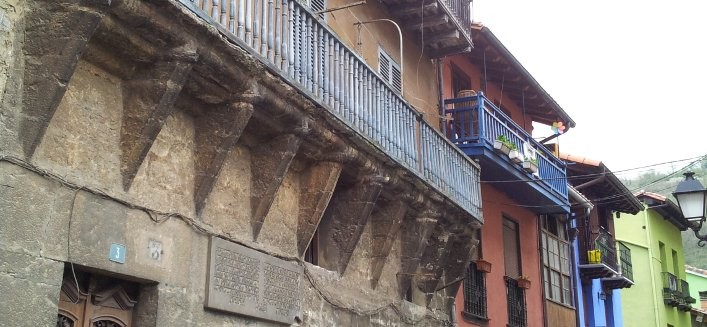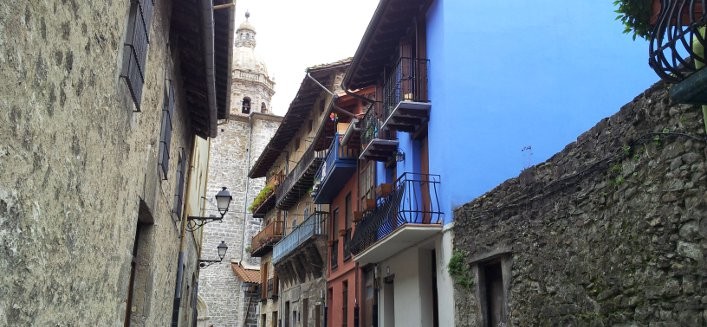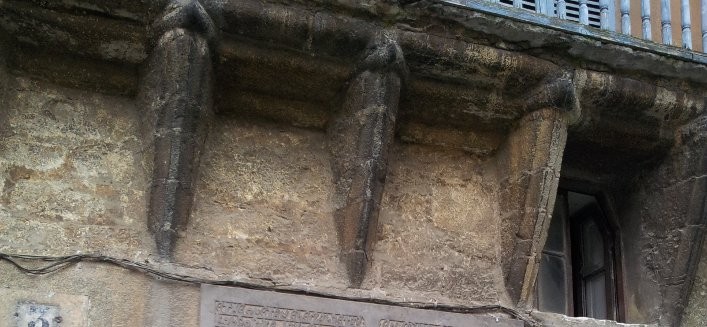A walk around Bergara historic centre enables visitors to discover the layout of the medieval road structure. This consists of three main thoroughfares: Barrenkale; Artekale, along which the Camino Real passed, and Goenkale, as well as several other diagonal streets.
There are indications that Bergara was a walled town, as were many others at the time, however, not enough evidence of the wall have been found to corroborate the exact perimeter.
Even though the buildings along the streets of the historic centre were built at a later date, some of them still retain medieval features that can be admired today. In Calle Goenkale the arched canopy forming the entrance (today a window) of house number 2, and the splendid balcony in number 3 can still be appreciated, as can the medieval twinned window in the Arrese canton.
However, what was once the medieval centre is today filled with colour. Through the initiative known as Bergara koloretan (Bergara in colour), artists in Bergara have transformed 40 small spaces into exhibition areas. Artists have created their artworks in shop windows and on the grey walls of unused premises so that the old town centre is now an outdoor art gallery.





